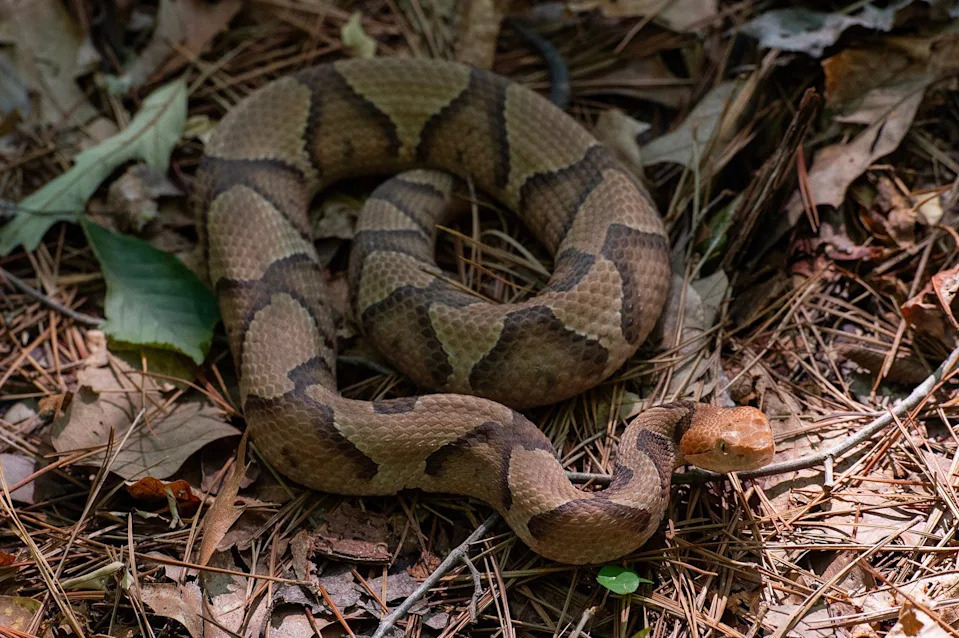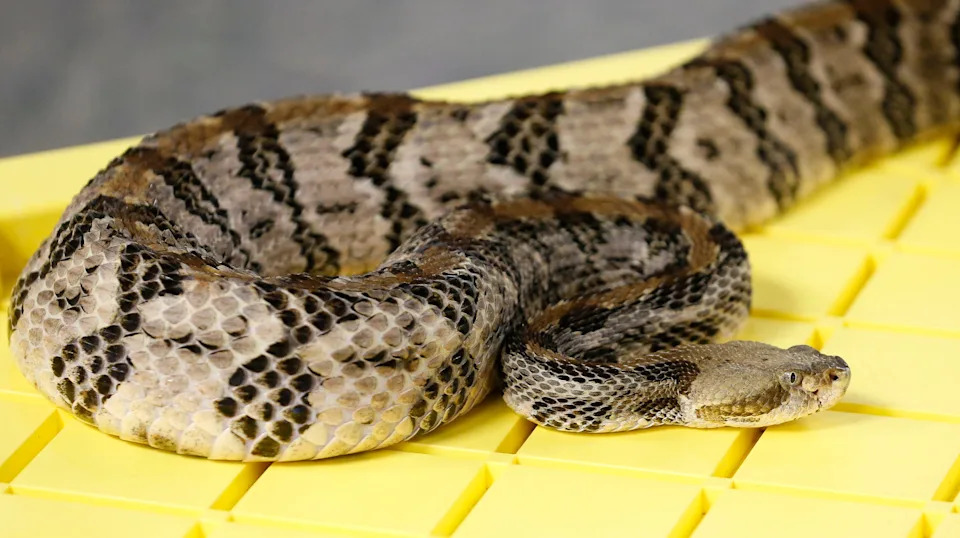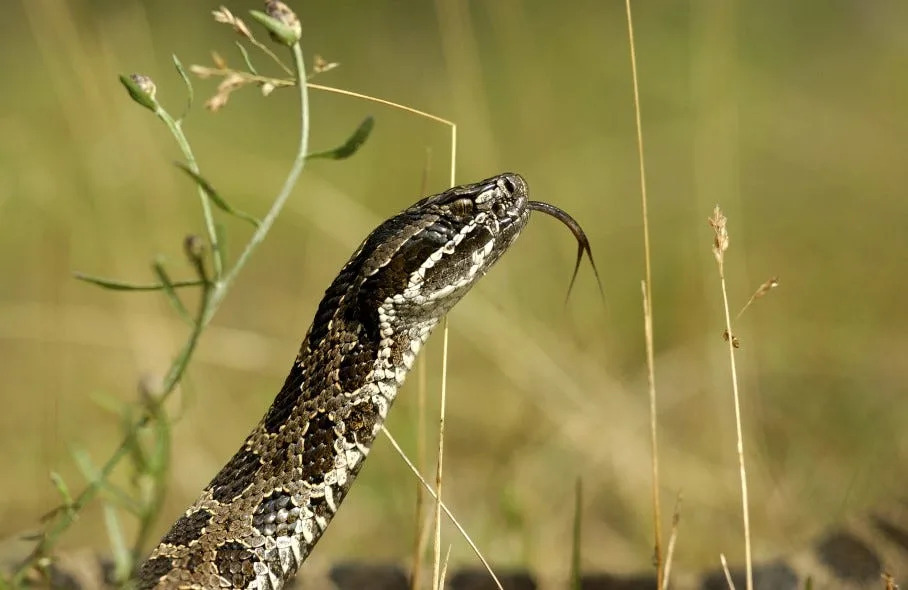A hiker died in Tennessee on Aug. 8 after being bitten by a rattlesnake he picked up, local officials said. The man likely died from an allergic reaction to the snake's venom, though the official cause of death has not yet been released, according to Matthew Griffith, the director of the Grundy County Emergency Management Agency.
The snake that bit the hiker was likely a timber rattlesnake, reported The Tennessean, part of the USA TODAY Network. The Tennessee Wildlife Resource Agency says their habitats include mature and heavily wooded forests with rocky hillsides, bluffs or ledges.
Do they live in Illinois? Here's what you should know before your next hike.
How common are venomous snake bites? How deadly?
Venomous snake bites are relatively uncommon, with an estimated 7,000–8,000 people being bitten per year by venomous snakes in the U.S., according to the Centers for Disease Control and Prevention.
Thanks to the frequency of victims seeking immediate medical care, only about five of those people typically die, the CDC says.
Does Illinois have timber rattlesnakes?
Yes, the timber rattlesnake is one of four types of venomous snakes found in Illinois.
More about Illinois snakes: Don't reach under that log! See which venomous snakes to look out for in Illinois
Types of venomous snakes in Illinois
Only four of Illinois' 40 native snake species are venomous, according to the IDNR. Here's what to look out for:
Eastern Copperhead: Found throughout southern Illinois. Average length of 24 to 36 inches with a flattened head wider than its neck and ridged scales. The snake has a copper-red head, red-brown or yellow-brown body and hour-glass markings across the back when viewed from above. They prefer forests and river bluffs.

Timber Rattlesnake: Found mostly in southern and western regions of Illinois. Average length of 36-60 inches in length. A flat head much wider than the neck with a rattle at the tip of its tail and ridged scales. The body is gray, yellow or green-white with a series of dark bands along the back and a rust-colored stripe in the middle of the back. A dark bar may be found between the eye and jaw.

Northern Cottonmouth: Found in swamps and wetlands in the southern tip of Illinois. Averages 30-42 inches in length with a flat head much wider than its neck. Ridged scales with plain black or brown coloring and little evidence of a pattern. Some have dim crossbands across the back.

Eastern Massasauga: Found in prairie wetlands and river flood plains in the Chicago metro area, as well as parts of central Illinois. Average length of 18-30 inches with flat head much wider than its neck and ridged scales. The snake has a rattle at the tip of its tail, a row of dark blotches down its back and three rows of dark spots on the sides. The body is gray.

What to do if you see a snake
The Illinois Poison Center and IDNR recommend avoiding the following actions if you find yourself in areas with snakes:
Intentionally handling a snake.
Attempting to trap or feed a wild snake.
Touching a snake that appears dead (freshly killed snakes can bite).
Stepping on a snake in the wild.
Reaching under or stepping over rocks or logs (look around before sitting).
The two organizations recommend wearing leather boots in areas known to house venomous snakes.
What to do if a snake bites you
The IPC recommends the following actions if you are bitten by a snake:
Immobilize the affected limb.
Remove any jewelry such as rings, bracelets and watches.
Do not apply ice or heat, tight tourniquet, electric shocks, conduct oral suctioning or make incisions to the bite area.
Go to the nearest emergency department immediately.
You can speak to toxicology experts through the IPC's helpline 24/7 at 1-800-222-1222.
Signs you've been bitten by a venomous snake
Here's a list of venomous snakebite symptoms, according to the IPC:
Rapid progressive swelling.
Severe pain.
Redness on skin.
Broken blood vessel or bruised appearance.
Large blisters.
Bleeding.
Tissue ulceration.
Tingling of the mouth, hands and feet.
Drop in blood pressure or shock.
Respiratory failure.
Weakness and sweating.
Nausea and vomiting.
Kirsten Fiscus and Anthony Robledo contributed to this article.
This article originally appeared on Journal Star: Does Illinois have timber rattlesnakes? Snake bite safety, local species








Comments